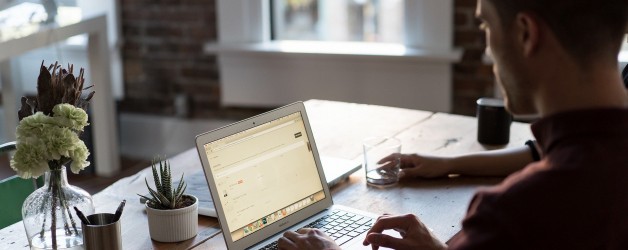New ways, new rules: Physical and mental wellbeing when working from home
Creating a workspace environment to support your holistic wellbeing can energise your engagement, productivity and satisfaction. At work, we focus, collaborate, rejuvenate, socialise and learn throughout the day. Great workspaces are designed to be an interconnected ecosystem of collaboration and community zones, where people have choice over where and how they work.
So, how do we transfer this to the home environment?
Chair of Occupational Health Group, Deb Sutherland, helps us put physical and mental wellbeing at the forefront of our transition to a home office.
Office reboot- your home environment
Select which areas in your home relate best to the tasks and activities you will do in that space. These spaces may need to be shared with others also working from home so space, equipment, sound and privacy need consideration. Earphones can come in handy!
- The amount of natural light effects our mood so working in a light open living area using a dining table is a good place to start. You may need to adjust window coverings during the day to prevent sunlight shining into your eyes and find a spot where artificial light doesn’t cause a reflect in the monitor. Making your workspace green by adding a plant or sitting next to an open window facing a garden can also enrich your environment.
- Choose a place where you can work as a focus zone without distraction. This could be a kitchen dining table where you can work in sitting and ideally the height would be around 70 cms depending on your height. Freeing up the table space so you can work comfortably may mean removing any clutter both on top and underneath the table and leave room to share the space with any others also working from home.
- Pick a chair that has a good back support and a flat comfortable seat. If the chair has a hard back, you can place a small cushion or rolled up towel in the lower back to suit your posture. Use a seat cushion to adjust your sitting height so your feet are flat on the floor. If the chair is too high a couple of paper reams can be used as a foot riser.
- Your forearms can be either resting supported on the table top or unsupported when using the keyboard and mouse, which should be within easy reach.
- The monitor or laptop is best placed directly in front at about arms-length and raised so that when looking ahead, your eyes are level with the top of the screen. You can use an upturned tub, reams of paper or a small box to achieve the correct height.
Fuel creative ideas, get active!
Most of us usually spend a few hours away from our assigned workspace in meetings and co-working. Active collaboration, such as meetings as you roam the house with your phone connection, enhances physical, mental and emotional engagement. Shifting to standing work areas such as at a high kitchen and even a laundry bench for at least a half hour several times a day can be an energising factor. Ideally the monitor height is at eye level and the keyboard and mouse raised.
Be clever with your workspace. For example, the fridge is an ideal substitute for a white board ideas space. Mixing rooms, postures and moving light furniture for different tasks throughout the day also keeps us alert and focussed.
Now that you are set up, it is important to stretch and move throughout the day. Pick several stretches each half hour which will take about a minute, holding each stretch gently for about 5 seconds.
They could include:
- squeezing your shoulder blades together
- shoulder rolls
- extending backwards
- stretching the forearms and neck gently
- calf raises.
It’s a good idea to move larger muscle groups every two hours, so a short break such as walking to the front gate or up and down a single flight of steps is great for mental and physical wellbeing.
Social places which were used for coffee, conversations and meal breaks can be substituted by connecting on social media with your team and friends. Group chats and exercise such as walking, yoga, dancing or games keep communication channels open and sharing working experiences helps adjust to the new environment.
Take your brain to the gym
Without the need to travel to work, we have more recreation time. Set time aside to give the screen a break, connect, do some sodoku, puzzles or upskill by completing those long awaited short online courses you’ve had on the to-do list! Flex your creative muscles on a daily basis. Check out some online exercise classes and think of ways to increase your cardio fitness such as by walking, jogging, skipping and steps.
Feeling unmotivated?
Checking in first thing in the morning with your team, discussing challenges, plans and something to achieve for the day, organising existing workloads, collaborating in real- time; all encourage good mental and physical health, posture and movement. A lunch time short fast walk or movement game is a great way to up the circulation and have fun with team members. Reach out to team members or your manager if you are experiencing problems as there is always help.
Safety
Finally, a word about safety. Are the workspaces safe and without risk of injury?
Check if the floor spaces are uncluttered and if there are any trip hazards including floor coverings, power cords and furniture. If you do have any concerns about your workspace, have a manager or someone you can contact to support you solving the issue.

